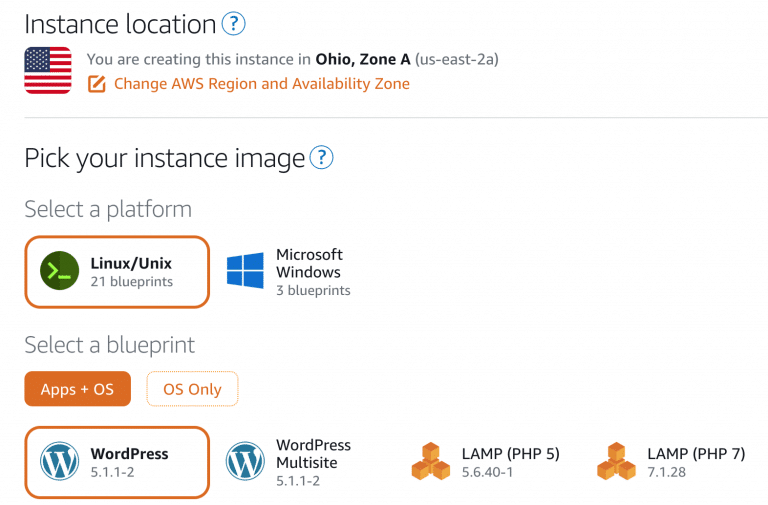Discovering that your email address appears in a data breach can be alarming. With data breaches exposing billions of accounts and occurring approximately 11 times per day, it's increasingly likely you'll face this situation at some point. The good news is that finding out about a breach is actually the first step toward protecting yourself—many people never know their information has been compromised until it's too late.
This comprehensive guide provides a detailed, prioritized action plan for responding to data breaches, explains why each step matters, and helps you minimize the potential damage to your online security and identity.
The First 24 Hours: Immediate Response Actions
When you discover your email in a data breach, time is critical. The faster you respond, the less likely attackers can exploit your compromised information.
Step 1: Don't Panic—Assess the Situation
Before taking action, understand what happened:
Check the breach details:
- When did the breach occur?
- What specific data was compromised (email only, passwords, payment info, personal details)?
- How many accounts were affected?
- Is this a recent breach or an old one?
This information helps prioritize your response. A breach from 2014 that you've already addressed requires different actions than a breach discovered yesterday.
Review your current security posture:
- Have you changed passwords since the breach date?
- Do you use unique passwords for different accounts?
- Is two-factor authentication enabled?
- Have you noticed any suspicious account activity?
If you've already changed passwords and enabled 2FA since the breach occurred, your risk is significantly reduced.
Step 2: Change Passwords Immediately
This is the single most important action to take when your email appears in a breach.
Prioritize critical accounts:
1. Email account itself - If your email password was compromised, change it immediately. Email is the master key to your digital life—it's used for password resets on virtually every other account.
2. Financial accounts - Banks, investment accounts, payment processors (PayPal, Venmo), and cryptocurrency exchanges should be secured immediately.
3. Shopping and e-commerce - Amazon, eBay, and other sites with stored payment methods need attention.
4. Healthcare portals - Medical records are extremely valuable on the black market and require strong protection.
5. Work accounts - Professional email and business systems could lead to corporate data breaches if compromised.
6. Social media - Facebook, Twitter, Instagram, and LinkedIn accounts are often used for social engineering attacks.
Password change best practices:
- Use strong, unique passwords - Minimum 12 characters combining uppercase, lowercase, numbers, and symbols
- Never reuse passwords - Each account needs a unique password
- Use a password manager - Tools like 1Password, Bitwarden, or LastPass generate and store strong passwords securely
- Avoid common patterns - Don't use keyboard patterns, dictionary words, or personal information
- Consider passphrases - Longer phrases like "Coffee-Morning-Sunshine-42!" are both strong and memorable
Password changing workflow:
- Start with your email account
- Move to financial accounts
- Continue with other critical services
- Document which accounts you've updated (use your password manager's notes feature)
- Set reminders to change passwords on less critical accounts over the coming days
Step 3: Enable Two-Factor Authentication (2FA) Everywhere
Two-factor authentication adds a crucial second layer of security that blocks attackers even if they have your password.
Why 2FA is essential:
- Even with your compromised password, attackers can't access accounts without the second factor
- Provides notification when someone tries to log in (you'll receive the 2FA code)
- Dramatically reduces account takeover success rates
2FA methods ranked by security:
1. Hardware security keys (most secure) - Physical devices like YubiKey or Google Titan Key that you plug into your computer or tap on your phone. Nearly impossible to phish.
2. Authenticator apps (strong security) - Apps like Authy, Google Authenticator, or Microsoft Authenticator generate time-based codes. Much more secure than SMS.
3. SMS text messages (acceptable minimum) - Receiving codes via text message. Vulnerable to SIM swapping but better than no 2FA.
4. Email-based (weak 2FA) - Receiving codes via email. If your email is compromised, this offers no protection.
Which accounts need 2FA:
- Email (absolutely critical)
- Financial accounts (banks, investments, payment processors)
- Cloud storage (Google Drive, Dropbox, iCloud)
- Social media (especially Facebook, which is often used for authentication on other sites)
- Password manager (securing your password vault)
- Work accounts (protect company data)
- Any account containing sensitive personal information
Implementation timeline:
- Enable on email and financial accounts within 24 hours
- Add to other critical accounts within one week
- Implement across all supported accounts within one month
Step 4: Check for Unauthorized Access and Activity
Once you've secured your accounts with new passwords and 2FA, look for signs of unauthorized access.
Email account review:
- Check "Sent" folder for emails you didn't send
- Review "Trash" and "Spam" folders for deleted evidence
- Examine email filters/rules that attackers might have created to hide notification emails
- Check forwarding rules that might send copies of your emails to attackers
- Review "Connected Apps" or "Third-Party Access" to revoke suspicious authorizations
- Look at login history for unfamiliar locations or devices
Financial account monitoring:
- Review recent transactions for unauthorized charges
- Check for address changes or new payees/beneficiaries
- Look for password reset requests you didn't make
- Verify no new accounts opened in your name
- Check for unauthorized withdrawals or transfers
Social media and online accounts:
- Review recent posts or messages you didn't create
- Check for changed profile information
- Look at connected applications and revoke suspicious ones
- Review friend requests or connections made without your knowledge
- Check for privacy setting changes
Identity theft indicators:
- Credit inquiries you didn't authorize
- New accounts appearing on credit reports
- Unexpected bills or collection notices
- Tax return problems (someone filed using your SSN)
- Medical bills for services you didn't receive
Week One: Comprehensive Security Improvements
After handling immediate threats, implement comprehensive security improvements over the first week.
Step 5: Implement Password Manager for Unique Passwords
If you don't already use a password manager, now is the time to start.
Benefits of password managers:
- Generates cryptographically random passwords
- Stores passwords encrypted with master password
- Auto-fills credentials (reducing phishing risk)
- Identifies password reuse across accounts
- Alerts you to weak or compromised passwords
- Syncs across all your devices
Popular password managers:
- Bitwarden - Open source, free tier includes essentials
- 1Password - User-friendly, excellent family sharing
- LastPass - Feature-rich, well-established
- KeePass - Completely offline, maximum control
- Dashlane - Built-in VPN and dark web monitoring
Getting started:
- Choose a password manager and create account
- Generate a strong master password (use a memorable passphrase)
- Enable 2FA on the password manager itself
- Import existing passwords (or start fresh)
- Replace weak/duplicate passwords with manager-generated ones
- Install browser extensions and mobile apps
- Set up emergency access for trusted contacts
Step 6: Monitor Financial Accounts and Credit Reports
Place additional monitoring on financial systems to catch identity theft early.
Immediate financial monitoring:
- Set up account alerts for all transactions over a certain amount
- Enable notifications for any account changes (address, phone, security settings)
- Review statements immediately rather than waiting for monthly cycles
- Consider placing fraud alerts with credit bureaus
Credit monitoring actions:
- Pull free credit reports from all three bureaus (Experian, Equifax, TransUnion)
- Review for unauthorized accounts or inquiries
- Consider credit freeze if breach included SSN or financial data
- Sign up for free credit monitoring through your bank or Credit Karma
- Set up alerts for new credit inquiries or account openings
Credit freeze vs. fraud alert:
Credit freeze (strongest protection):
- Prevents anyone from accessing your credit report
- Blocks new account openings
- You can temporarily lift for legitimate applications
- Free and highly effective
Fraud alert (basic protection):
- Requires extra verification for new credit applications
- Lasts 1-7 years depending on type
- Less restrictive than freeze
- Good for lower-risk situations
Step 7: Alert Contacts About Potential Compromise
If your email account was compromised, warn your contacts about potential phishing.
Why this matters: Attackers often use compromised email accounts to send phishing emails to contacts, exploiting the trust relationship to steal more credentials or spread malware.
How to alert contacts:
- Use a different, secure communication channel (phone call, text message, alternate email address)
- Explain that your email account was compromised
- Warn contacts to ignore suspicious emails appearing to come from you
- Advise them to verify any unusual requests (money transfers, password resets, etc.) through alternative channels
- Provide guidance on identifying phishing attempts
Sample message: "Hi, I wanted to let you know my email account was involved in a data breach. I've secured my account now, but please be cautious about any suspicious emails that appear to come from me, especially requests for money, passwords, or clicking on links. If you get something that seems odd, please call or text me to verify before taking action."
Ongoing Protection: Long-Term Security Practices
Beyond immediate response, implement long-term practices to minimize future breach impact.
Step 8: Set Up Breach Notification Services
Rather than manually checking for breaches, automate monitoring with notification services.
Have I Been Pwned notifications:
- Visit haveibeenpwned.com
- Enter your email address
- Click "notify me" for future breaches
- Verify your email address
- Receive automatic alerts when your email appears in new breaches
Other monitoring services:
- Mozilla Monitor - Free monitoring using HIBP data
- Firefox Monitor - Integrated browser monitoring
- Google Password Checkup - Monitors saved Chrome passwords
- Password manager breach alerts - Most password managers now include breach monitoring
- Credit monitoring services - Many financial institutions offer free monitoring
Monitoring multiple email addresses: If you use multiple email addresses (work, personal, old accounts), set up monitoring for each one.
Step 9: Audit and Secure All Online Accounts
Conduct a comprehensive audit of your digital footprint.
Create account inventory:
- List all online accounts you have
- Identify accounts you no longer use
- Note which accounts share passwords
- Document which accounts have 2FA enabled
- Track when you last changed each password
Account cleanup:
- Delete accounts you no longer need (reduces attack surface)
- Update passwords on accounts sharing credentials
- Enable 2FA on all accounts that support it
- Review and revoke unnecessary app permissions
- Update recovery email addresses and phone numbers
Ongoing maintenance schedule:
- Review account inventory quarterly
- Change passwords annually (or when breached)
- Audit app permissions semi-annually
- Delete unused accounts as discovered
- Update recovery methods when contact information changes
Step 10: Improve Overall Security Posture
Use this breach as motivation to implement comprehensive security improvements.
Email security enhancements:
- Use email aliases for different services (SimpleLogin, AnonAddy)
- Enable advanced phishing protection in email client
- Set up email filters for suspected phishing
- Use separate email addresses for financial, shopping, and social accounts
Device security:
- Enable full-disk encryption (FileVault on Mac, BitLocker on Windows)
- Keep operating systems and applications updated
- Install reputable antivirus/antimalware software
- Enable device tracking and remote wipe capabilities
- Use strong device passwords/biometrics
Network security:
- Use VPN on public Wi-Fi networks
- Change default router passwords
- Enable WPA3 encryption on home Wi-Fi
- Segment IoT devices on separate network
- Regularly update router firmware
Privacy enhancements:
- Review privacy settings on social media
- Limit personal information shared publicly
- Use privacy-focused browsers and search engines
- Install privacy-enhancing browser extensions (uBlock Origin, Privacy Badger)
- Minimize data collected by apps and services
Special Situations: Additional Considerations
Some breaches require specialized responses based on what data was exposed.
When Passwords Were Compromised
If the breach included passwords (even if hashed):
- Change password on the breached service immediately
- Change passwords on ANY other accounts using the same password
- Assume the password is known to attackers even if it was "securely hashed"
- Monitor accounts using that password for suspicious activity
- Consider the password permanently compromised—never use it again
When Payment Information Was Exposed
If credit card or bank account information was included:
- Contact your bank immediately to report potential fraud
- Request new card with new number (not just replacement)
- Monitor accounts daily for unauthorized charges
- File police report if fraudulent charges occur
- Consider credit freeze until situation resolves
- Keep documentation of all breach-related communications
When SSN or Government IDs Were Compromised
When breaches include Social Security numbers, passport numbers, or driver's license data:
- Place credit freeze with all three credit bureaus immediately
- File report with FTC (identitytheft.gov)
- Consider identity theft protection services
- Monitor tax filing (file early to prevent tax fraud)
- Watch for signs of identity theft (new accounts, credit inquiries)
- Keep detailed records of all actions taken
When Health Information Was Exposed
For breaches of medical records or health insurance information:
- Request accounting of disclosures from healthcare providers
- Review medical records for accuracy
- Monitor insurance claims for fraudulent services
- File complaints with HHS Office for Civil Rights if HIPAA violation
- Watch for medical identity theft signs
When Corporate Email Was Breached
If your work email appeared in a breach:
- Inform IT department immediately
- Follow company incident response procedures
- Change corporate account passwords
- Review access logs for unauthorized activity
- Report potential company data exposure
- Document all actions for compliance purposes
Common Mistakes to Avoid
When responding to breaches, avoid these common errors:
1. Delaying action - Every day you wait increases attacker opportunity. Act immediately.
2. Changing only one password - If you reuse passwords, all accounts using that password are at risk.
3. Using weak replacement passwords - Strong passwords are essential. Use password manager to generate them.
4. Ignoring 2FA - Password changes alone aren't enough. Enable 2FA everywhere.
5. Forgetting old accounts - That MySpace or AOL account from 2006 could still be a vulnerability.
6. Not monitoring for signs of compromise - Changed passwords don't undo damage already done.
7. Falling for post-breach phishing - Attackers often target breach victims with phishing. Be extra vigilant.
8. Reusing "new" passwords - Never use a password again once it's been in a breach, even on the same service.
9. Ignoring mobile apps - Many mobile apps have separate logins that also need securing.
10. Assuming you're safe once passwords are changed - Identity theft can happen long after initial breach. Maintain vigilance.
Measuring Your Progress
Track your breach response to ensure nothing falls through the cracks:
Immediate actions checklist (24 hours):
- ☐ Email password changed
- ☐ Financial account passwords changed
- ☐ Critical service passwords changed
- ☐ 2FA enabled on email
- ☐ 2FA enabled on financial accounts
- ☐ Checked for unauthorized access
Short-term actions checklist (1 week):
- ☐ Password manager installed and configured
- ☐ Unique passwords on all critical accounts
- ☐ Credit reports reviewed
- ☐ Contacts notified if applicable
- ☐ Breach notifications enabled
- ☐ Account inventory created
Long-term actions checklist (1 month):
- ☐ All accounts have unique passwords
- ☐ 2FA enabled everywhere supported
- ☐ Unused accounts deleted
- ☐ Security settings reviewed across all accounts
- ☐ Monitoring systems in place
- ☐ Regular security maintenance scheduled
The Silver Lining: Learning and Improvement
While discovering your email in a breach is concerning, it presents an opportunity to significantly improve your security:
- You're now aware of the threat (many people aren't)
- You have motivation to implement strong security practices
- You're ahead of attackers if you act quickly
- Your future breach exposure will be much more limited
Many security-conscious individuals only became that way after experiencing a breach. Use this as a catalyst for lasting security improvements.
Conclusion
Discovering your email in a data breach requires immediate action, but following a systematic response plan minimizes damage and strengthens your overall security. The key steps—changing passwords immediately, enabling 2FA everywhere, monitoring accounts for unauthorized activity, implementing a password manager, and setting up breach notifications—form the foundation of effective breach response.
Remember that data breaches are increasingly common, affecting even the most security-conscious users. What matters isn't whether you appear in breaches (you likely will at some point) but how quickly and effectively you respond when it happens. By taking decisive action and implementing strong security practices, you transform a security incident into an opportunity for significant improvement in your digital safety.
Ready to check if your email has been compromised? Use our Breach Checker tool to search billions of breached records and take control of your online security today.



